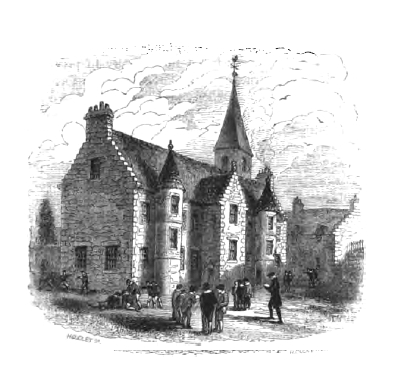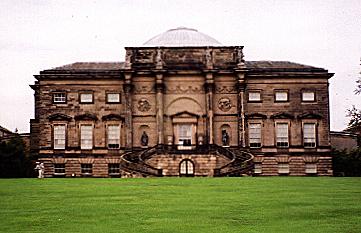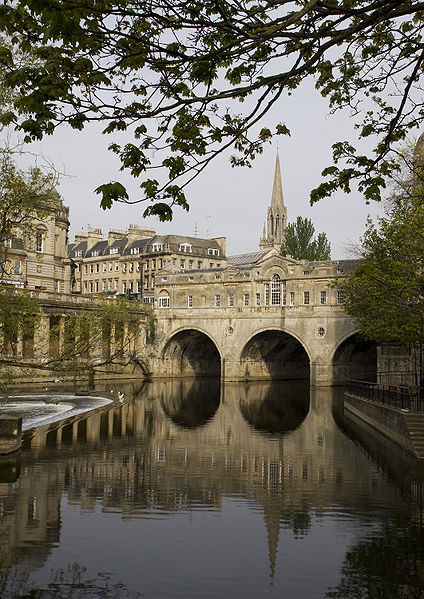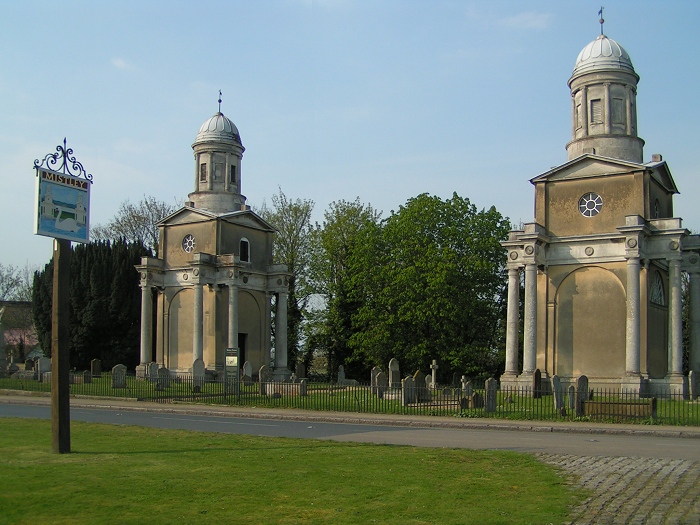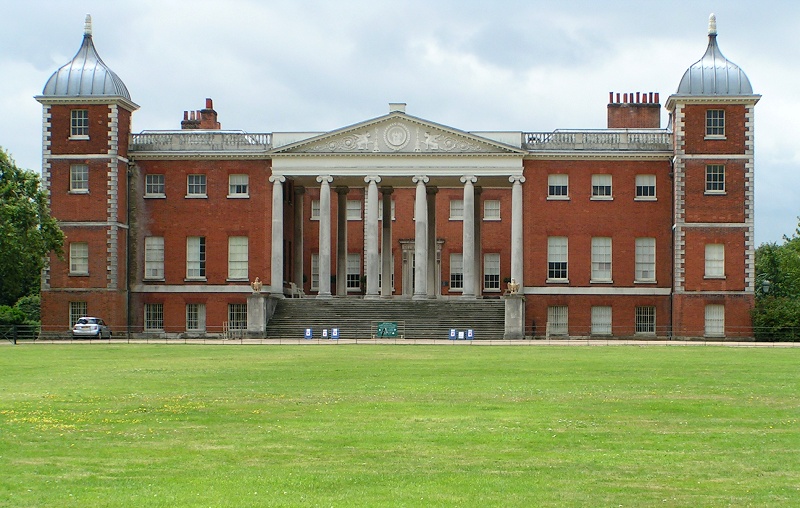<Back to Index>
- Explorer Samuel de Champlain, 1580
- Architect Robert Adam, 1728
- King of France Louis XI, 1423
PAGE SPONSOR
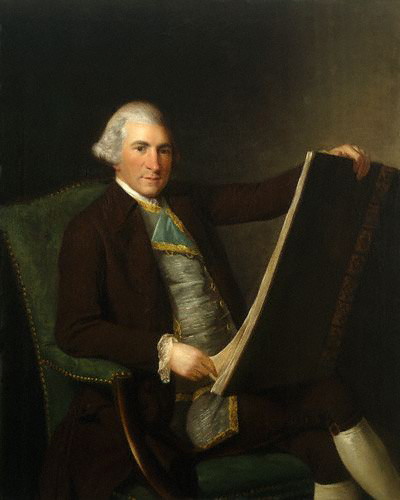
Robert Adam (3 July 1728 – 3 March 1792) was a Scottish neoclassical architect, interior designer and furniture designer. He was the son of William Adam (1689 – 1748), Scotland's foremost architect of the time, and trained under him. With his older brother John, Robert took on the family business, which included lucrative work for the Board of Ordnance, after William's death.
In 1754 he left for Rome, spending nearly five years on the continent studying architecture under Charles-Louis Clérisseau and Giovanni Battista Piranesi. On his return to Britain he established a practice in London, where he was joined by his younger brother James. Here he developed the "Adam Style",
and his theory of "movement" in architecture, based on his studies of
antiquity and became one of the most successful and fashionable
architects in the country. Adam held the post of Architect of the Kings Works from 1761 to 1769. Robert Adam was leader of the first phase of the classical revival in England and Scotland from around 1760 until his death. He influenced the development of Western architecture, both in Europe and in North America. Adam was not content with providing houses for his clients but very ready to design the fittings and accessories as well. Adam was born at Gladney House in Kirkcaldy, Fife, although the family moved to Edinburgh later that same year. As a child he was noted as having a "feeble constitution". From the age of six Adam attended Edinburgh High School, where he learned Latin until he was fifteen. In autumn 1743 he matriculated at Edinburgh University, and attended classes including mathematics, taught by Colin Maclaurin, and anatomy, taught by Alexander Monro primus. His studies were interrupted by the arrival of Bonnie Prince Charlie and his Highlanders, who occupied Edinburgh during the 1745 Jacobite rising.
At the end of the year, Robert fell seriously ill for some months, and
it seems unlikely that he returned to university, having completed only
two years of study. On
his recovery from illness in 1746, he joined his elder brother John as
apprentice to his father. He assisted William Adam on projects such as
the building of Inveraray Castle and the continuing extensions of Hopetoun House.
William's position as Master Mason to the Board of Ordnance also began
to generate much work, as the Highlands were fortified following the
failed Jacobite revolt. Robert's early ambition was to be an artist
rather than architect, and the style of his early sketches in the
manner of Salvator Rosa are reflected in his earliest surviving architectural drawings, which show picturesque gothic follies. William Adam died in June 1748, and left Dowhill, a part of the Blair Adam estate which included a tower house, to Robert. On
William Adam's death, John Adam inherited both the family business and
the position of Master Mason to the Board of Ordnance. He immediately
took Robert into partnership, later to be joined by James Adam. The
Adam Brothers' first major commission was the decoration of the grand state apartments on the first floor at Hopetoun House, followed by their first "new build" at Dumfries House. For the Board of Ordnance, the brothers were the main contractor at Fort George, a large modern fort near Inverness designed by military engineer Colonel
Skinner. Visits to this project, begun in 1750, would occupy the
brothers every summer for the next ten years, and, along with works at
many other barracks and forts, provided Robert with a solid foundation
in practical building. In the winter of 1749 – 1750, Adam travelled to London with his friend, the poet John Home. He took the opportunity for architectural study, visiting Wilton, designed by Inigo Jones, and the Queens Hermitage in Richmond by Roger Morris. His sketchbook of the trip also shows a continuing interest in gothic architecture. Among his friends at Edinburgh were the philosopher Adam Ferguson and the artist Paul Sandby whom he met in the Highlands. Other Edinburgh acquaintances included Gilbert Elliot, William Wilkie, John Home and Alexander Wedderburn.
In 1754, Robert Adam set off for Europe on the Grand Tour of France and Italy, in the company of Charles Hope-Weir, brother of the Earl of Hopetoun.
Hope agreed to take Adam on the tour at the suggestion of his uncle,
the Marquess of Annandale, who had undertaken the Grand Tour himself.
Adam met Hope-Weir in France, and they travelled on to Italy together,
before falling out in Rome over travelling expenses and accommodation.
Robert Adam stayed on in Rome until 1757, studying classical
architecture and honing his drawing skills. His tutors included the
French architect and artist Charles-Louis Clérisseau, and the Italian artist Giovanni Battista Piranesi. Here, he became acquainted with the work of the pioneering classical archaeologist and art historian, theorist Johann Joachim Winckelmann. On his return journey, Adam and Clerisseau spent time intensively studying the ruins of Diocletian's Palace at Spalato in Dalmatia (now known as Split, in modern Croatia). These studies were later published as Ruins of the Palace of the Emperor Diocletian at Spalatro in Dalmatia in 1764.
He
returned to Great Britain in 1758 and set up in business in London with
his brother James Adam. They focused on designing complete schemes for
the decoration and furnishing of houses. Palladian design was popular, and Robert designed a number of country houses in this style, but Robert evolved a new, more flexible style incorporating elements of classical Roman design alongside influences from Greek, Byzantine and Baroque styles. The
Adam brothers' success can also be attributed to a desire to design
everything down to the smallest detail, ensuring a sense of unity in
their design. Adam was elected a member of the Royal Society of Arts in 1758 and of the Society of Antiquaries in 1761, the same year he was appointed Architect of the King’s Works (jointly with Sir William Chambers).
His younger brother James succeeded him in this post when he relinquished the role in 1768 in order to devote more time to his
elected office as Member of Parliament for Kinross-shire. Robert Adam died suddenly at his home, 11 Albermarle Street, London, after a blood vessel in his stomach burst. He was 64. He was buried in Westminster Abbey. He left nearly 9,000 drawings, most of which were purchased by the architect John Soane and are now at the Soane Museum in London. Robert Adam rejected the Palladian style, as introduced to England by Inigo Jones, and advocated by Lord Burlington, as "ponderous" and "disgustful". However, he continued their tradition of drawing inspiration directly from classical antiquity, during his four-year stay in Europe. Through the adoption of classical motifs, Adam developed a new style of architectural decoration. The
Adam brothers' principle of "movement" was largely Robert's conception,
although the theory was first written down by James. "Movement" relied
on dramatic contrasts and diversity of form, and drew on the picturesque aesthetic. The first volume of the Adam brother's Works (1773) cited Kedleston Hall, designed by Robert in 1761, as an outstanding example of movement in architecture. By
contrasting room sizes and decorative schemes, Adam applied the concept
of movement to his interiors also. His style of decoration, described
by Pevsner as "Classical Rococo", drew on Roman "grotesque" stucco decoration.
Robert Adam's work had influenced the direction of architecture across the western world. In North America, the Federal style owes much to neoclassicism as practised by Adam. In Europe, Adam notably influenced Charles Cameron, the Scotsman who designed Tsarskoye Selo and other Russian palaces for Catherine the Great. However,
by the time of his death, Adam's neoclassicism was being superseded in
Britain by a more severe, Greek phase of the classical revival, as
practiced by James "Athenian" Stuart. The Adam brothers employed several draughtsmen who would go on to establish themselves as architects, including George Richardson, and the Italian Joseph Bonomi, who Robert originally hired in Rome.
During their lifetime Robert and James Adam published two volumes of their designs, Works in Architecture of Robert and James Adam (in 1773 - 1778 and 1779; a third volume was published posthumously, in 1822).
